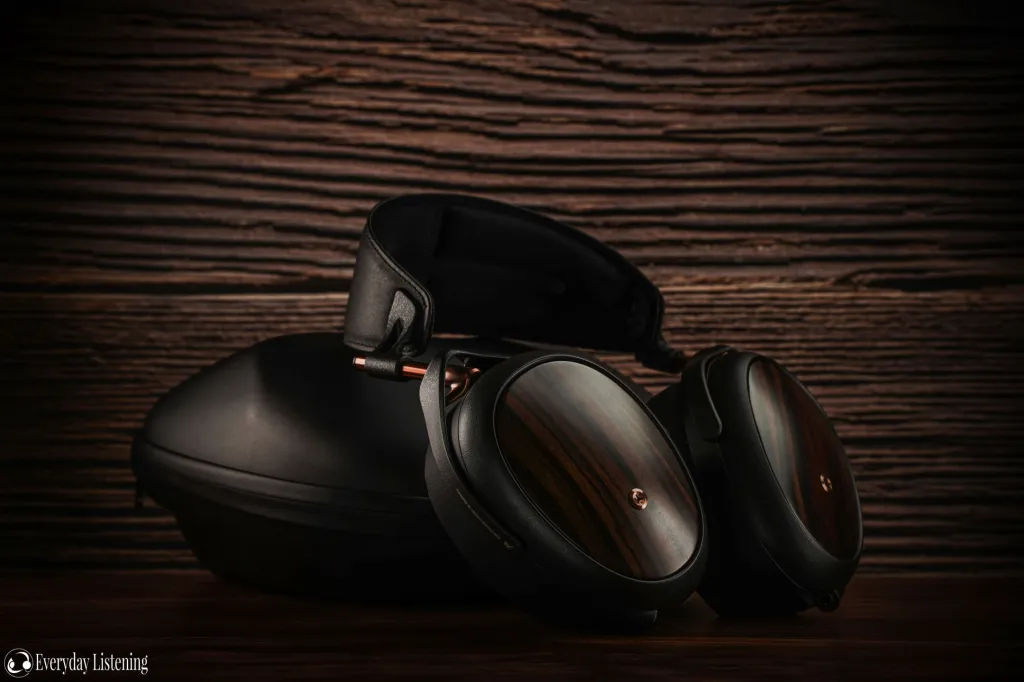Sound Summary

The CE320’s sound signature prioritises lower-mid saturation and sub-bass bloom for an analog-like sound reminiscent of early cabinet speakers. There is a noteworthy boost in the <60hz regions for a thicker weight in the sub-bass regions, followed by a deliberate tapering off above the 5kHz range to smoothen up sharp peaks that emerge in poorly-mastered recordings.
Interestingly, the CE320’s 3-balanced armature array goes against the grain, with a slower attack and decay, where note weight is practically extended for a velvety sonic profile, where cellos and stand-up bass takes precedence over other instruments. The CE320 is warm, inviting and comforting: a versatile tuning effective in a studio environment where outright resolution has to be counterbalanced with comfort.
This “romanticised” presentation is conducive towards fatigue-free listening. However, the “dynamic driver” like presentation results in a decline in transient speeds (attack). Intense gradations in volume (crescendoes) strain the CE320’s ability to keep up, resulting in observable muddiness and grain amidst the linear transition between the upper-midrange and highs. Tracks with crowded instrumentation and spontaneous swings in amplitude highlight those constraints.
Nonetheless, the CE320 is still fairly proficient in macro-dynamic detail, less so in intrinsic micro-dynamics.
Bass
As discussed above, the CE320’s <60 Hz sub-bass rumble is fairly prominent for an exclusively balanced-armature array, providing significant girth and heft to the lower end. Instruments highlighting even-harmonics excel on the CE320’s complementary presentation, where robust bass notes are deeply accentuated. Indie rock tracks are playfully warm and inoffensive, highlighting toe-tapping rhythms instead of ear-piercing highs.
Draggier bass notes are amplified, with decay taking a backseat. It is also worth noting that the CE320 is 100%, not a bass-head IEM. There is a false illusion of full-on bass bloat. The CE320’s decelerated bass response is not interchangeable with full-on sub-bass cannons (think the Polaris II’s infamous L-shaped signature).
However, the CE320 fails to mitigate the innate weaknesses of hollow BA bass. In simple terms, balanced armatures may respond fast to sudden swings in volume vis-a-vis dynamic drivers, but they fail to sufficiently displace enough air — the acoustic phenomenon that provides the low-end with minuscule layers of texture and micro-detail.
Midrange
The midrange is the “wow factor” of excellently-tuned products. It is the most prominent frequency band after all!
The CE320’s midrange response is tilted towards the lower midrange. The slow rise to the 500hz region follows a similar trend to the “Bass” region; the smooth climb allows the transition (in theory) between them to be as organic as possible. As such, the lower midrange is undeniably tuned in favour of smoothness over potential harshness and relaxation over possible peaks.
Jangly guitars have a slightly-exaggerated reverb, where nostalgia reigns supreme. Male vocals have a gramophone-like quality to them. There were virtually zero (to my ears) artefacts like glaring peaks during each long-listening session. Concurrently, the minor suck-out in the upper mids sacrifices detail retrieval and technical proficiency in favour of an idealised sonic signature.
The CE320’s predominant focus on a “laidback” sound is both a bane and boon, depending on your preferred genres.
Highs/Treble
The CE320’s high-band experiences significant roll-off above 6k: a sharp deviation that results in a distinct veil permeating the entire frequency band. Thus, subtle details and shifts between competing instruments like cymbals and horns seem “mushed” together.
Conversely, IEMs in a similar price bracket prioritising sonorous highs lack the technological prowess to eliminate grainy artefacts and uncontrolled shimmer. It is fairly obvious (to my ears) that the CE320 is attempting to nullify shrillness at the expense of raw detail retrieval.
However, there appears to be perceptible resonance at 4khz. This untamed lower-mid treble glare can be discomforting on tracks with a preponderance of ride cymbals and snares.
Soundstage/Imaging
The CE320 has above-average sound staging capabilities, with extended width and distance between the L-R channels. But the entire soundscape remains limited within a small radius (versus full-sized headphones with oversized transducers). Z axis width is also commensurate with the price point the CE320 commands. The CE320 isn’t an out-of-head experience like several flagship IEMs in the marketplace, it does a commendable job of spreading instruments and vocals across a flat plain.
Imaging-wise, the CE320 features classic balanced-armature separation, where instruments and vocal melodies are distinctly separated and sorted based on their individual frequency bands. The CE320 can identify vocal or instrumental cues in tracks with modest speeds and fairly-straightforward instrumentation. Yet, the CE320 exhibits signs of struggle with complex tunes, where the cavalcade of instruments across the stage blunts the CE320’s ability to locate them with exactness. Additionally, the lower-end tilt and sharper valley in the upper registers tend to benefit the identification of specific instruments and drown out others.
Onto the next page for details for the rest of the review…



